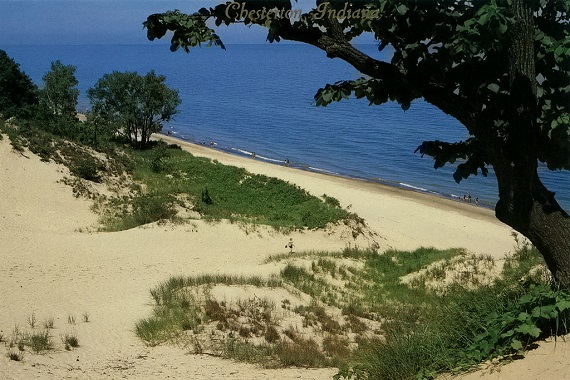
On the southernmost point of Lake Michigan, in northern Indiana, is where you’ll find Indiana Dunes. From Michigan City, Indiana in the east to the Gary, Indiana region in the west, the area runs about 15 miles. In addition to the abundance of white-sand beaches in this area, there are also untamed dunes, serene marshes, and a variety of hiking paths (50 miles to be exact). One of the most biologically diverse parks in the USA, this 15,000-acre park contains over 1,000 plant species.
This region was designated the Indiana Dunes National Lakeshore by Congress in 1966. As a result, the beaches saw an increase in visitors, making the dunes one of the Midwest’s most popular summer destinations. Indiana Dunes officially became the 61st national park in the US on February 15, 2019.
Although it may seem confusing, this area contains a state park within a national park. These state parks do not accept any national park passes; instead, they charge per vehicle, whether or not you are an out-of-state visitor. Both sides of the state park border the national park, which spans the coastline. When organizing your trip, just keep this in mind.
Best things to do in Indiana Dunes
Start your adventure at the Indiana Dunes Visitor Center
We advise stopping by the park Visitor Center first thing to get a feel for the area. This is an excellent location to find out about any events or trail closures that might either make or break your trip. Get any park maps you might require, or inquire about any must-see locations during the time of your stay. If you’re fortunate enough to see a clip, they do have a few short films explaining the different features of the park. While you’re there, don’t forget to collect your National Parks stamp.
Explore the Dunes Succession Trail and take the Diana of the Dunes Dare.
One of the nicest walks in Indiana Dunes National Park is unquestionably the Dunes Succession Trail. The trailheads are located at the West Beach Parking lots. You will encounter all of the many dune phases on the trip, just as Diana came to know and love them. On the hike, you’ll discover more about her. Depending on your choices and time limits, it can range from a 0.9-mile loop to 3.4 miles, with different variations in between. On the wooden boardwalk-style trail and when walking on the sand, there are a good number of stairs.
Take the West Beach Trail around to the stairs for a lengthier stroll, or park at the first, albeit small, parking spot near Long Lake. Some of the crowds in the outside areas will probably be avoided by using this path. Even if it takes a little longer, you can schedule a time to pause after the climbs, unwind on West Beach, and take in the lake vistas.
Visit Indiana Dunes State Park and take the 3 Dunes Challenge
Although this trek is fully within a State Park and is therefore fee-based, it is widely advertised and provides access to three of the region’s tallest dunes. You’ll have to climb more than 550 feet over 1.5 miles, including 192 feet to the peak of Mount Tom, much of it on rough sand. You’ll be rewarded with stunning views of the dunes and the lake beyond at the top of each dune. A 1.5-mile trip requires a lot of climbing, and the sand can be extremely hot. Therefore, you should bring more water than you think you’ll need. In a similar vein, make sure you put on appropriate footwear for this. You don’t want to get to the top of the dune and end up with sand burning your feet and a broken flip-flop.
Go for a Bike Ride
Six bike paths with varied lengths for most abilities total about 75 miles and wind through the National Park. The only unpaved portion is the 19-mile Calumet bike trail. Consider the Marquette route or the Dunes Kankakee trail for a quicker, more kid-friendly ride. Between the Dunes Visitor’s Center and the toll booth parking lot at the State Park lies the Dunes Kankakee trail. There is a parking facility for the Marquette Trail close to the County Line Road entry to West Beach. The former railbed of the Indiana Harbor Belt Railroad is followed by this trail. For something more intermediate-advanced, think about the Prairie Duneland Rail Trail or the Oak Savanah Rail Trail.
Observe the Stunning Plants and Foliage
Beautiful wildflowers border the trails leading away from the beaches in the spring and early summer. Beautiful wildflowers are especially well-known for growing along the Heron Rookery Trail. Fall offers the Dunes a very distinct backdrop because of the shifting leaves. With this habitat being one of the most varied in the entire National Parks System, there is always a possibility that you will witness something new on your subsequent visits.
Indiana Dunes Weather
The Indiana Dunes region has four distinct seasons and is greatly impacted by Lake Michigan. With highs in the mid-80s during the summer months of June, July, and August, the climate can be ideal for traveling to the beach. Snow does fall during the winter, and temperatures often range between 20 and 30 degrees. The weather is more temperate and ideal for some of the more strenuous activities in the spring and fall.
The Indiana Dunes beaches can be reached in two different ways. The initial is by automobile. Given that this location has 15 miles of beachfront, it is by far the finest choice so you have the greatest amount of freedom to explore the region and beaches.
The Indiana Dunes beaches can be reached by train in a second-most-direct manner. From Chicago, getting to Indiana Dunes on the South Shore Line is simple. Regular trains run approximately every hour, and tickets only cost $9! After spending the day in Indiana Dunes National Park, I did this to travel to Chicago. Without further ado, let’s get to the beaches in Indiana Dunes that you should visit.
Best Beaches in Indiana Dunes
West Beach
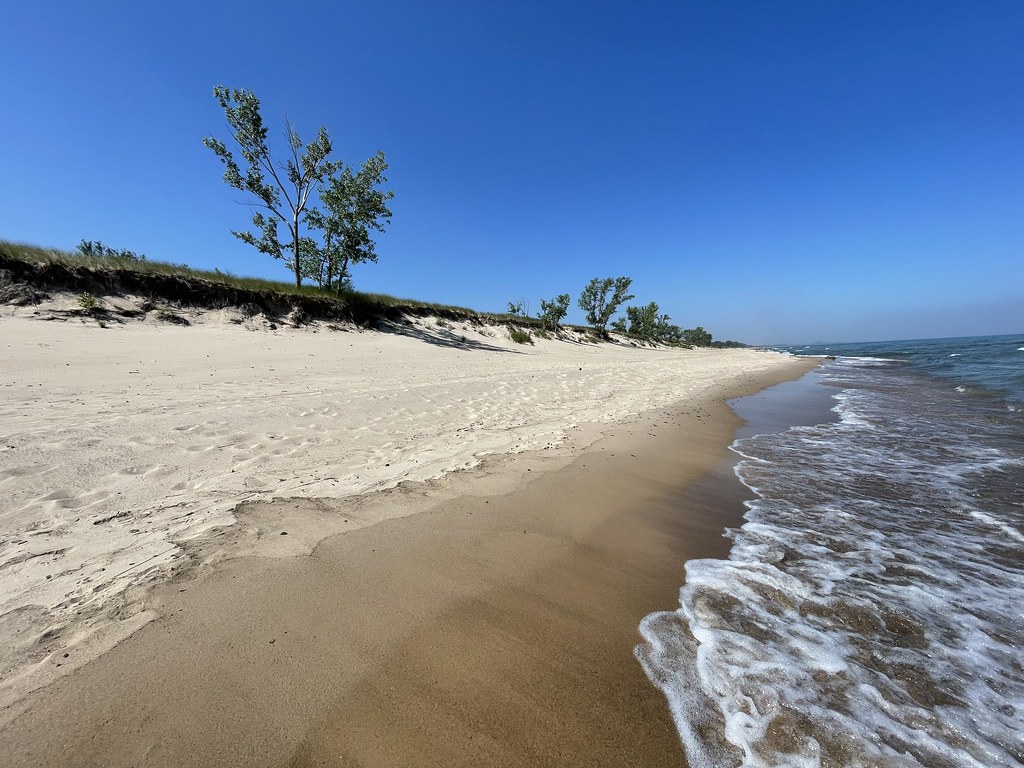
The Indiana Dunes National Park’s West Beach is the farthest-western of its beaches. Compared to other beaches in national parks, it has the biggest parking lot. An outdoor picnic area has picnic tables and a washroom with a snack bar. A wonderful journey that offers some of the Indiana Dunes’ most breathtaking views is the Dune Succession Trail.
Prickly Pear Cactus may be visible when trekking, so keep your eyes open. For swimming, Indiana Dunes’ beach is the busiest. This beach is situated on the park’s western edge, as its name suggests. One of the busiest Lake Michigan beaches is further enhanced by a bathhouse, a sizable expanse of sand, and an on-duty summer lifeguard.
Portage Lakefront & Riverwalk

Portage Lakefront and Riverwalk is located on an abandoned industrial site, unlike what you may think. The 57-acre park contains a boardwalk that is accessible, an indoor pavilion, and a concession stand with outdoor seating. Those with reduced mobility can access the shoreline through the boardwalk to enjoy the scenery or go fishing.
A tiny beach is also present. This is a fantastic location for a bite and the sunset. A covered pavilion with food service and facilities is located in this location. A kayak launch, a fishing pier, and accessible pathways are also present here.
Porter Beach
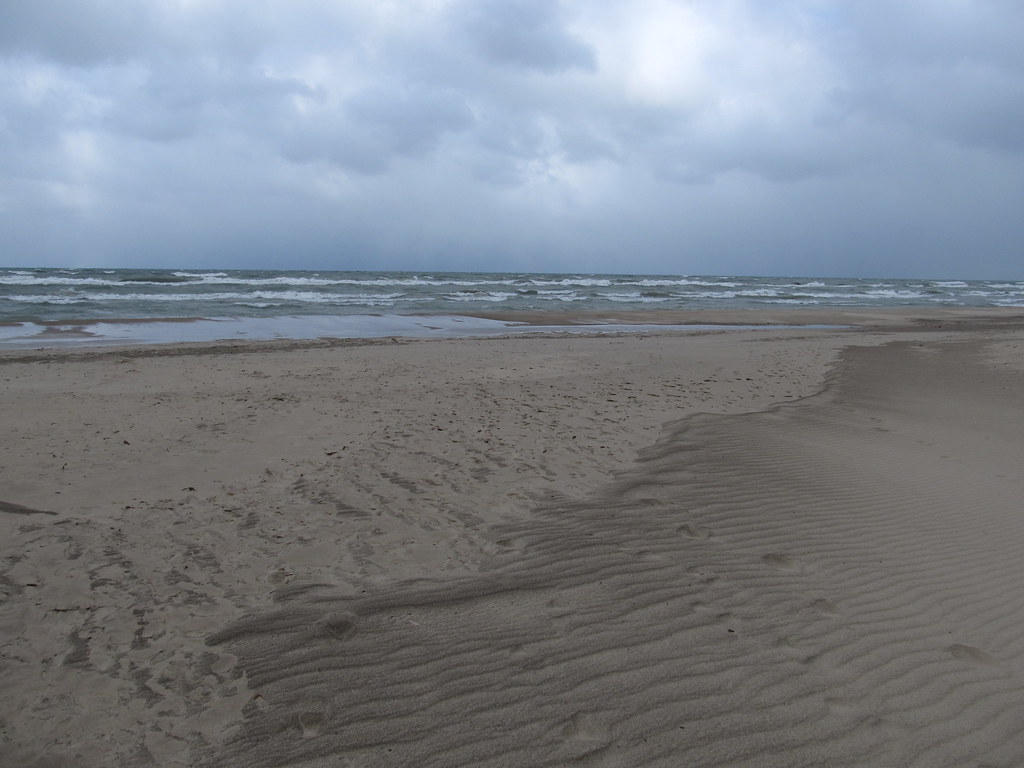
Porter beach is well-liked for sunbathing and participating in beach sports. Just below the shore is a community. On the location of a former hotel, a parking lot was constructed adjacent. Parking on the street requires a permit, so make sure you use the lot. The distance between the parking lot and the shore is only a short distance along the road.
The national park stretch of beaches includes this beach, which is also the nearest to Dune Park station. Porter Beach is good for young families as it features a washroom, a foot wash facility, and picnic tables. This location also boasts enormous dunes that are ideal for exploring and bird-watching.
Indiana Dunes State Park
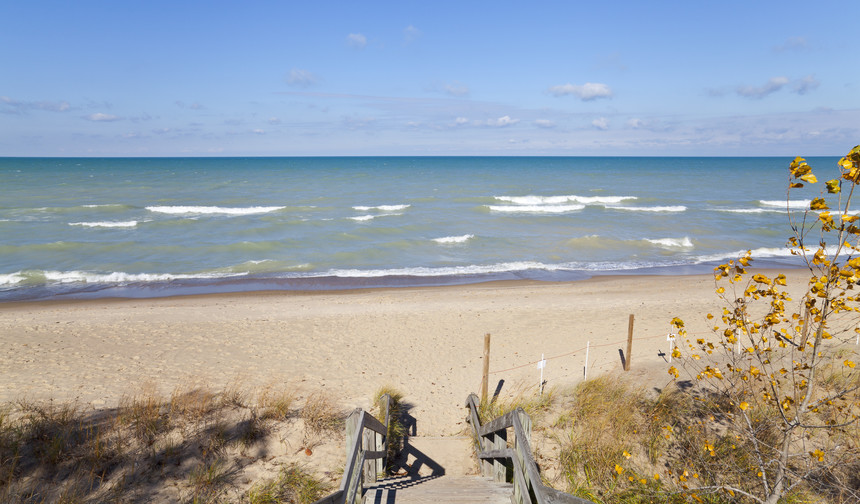
One of the most well-liked beaches in Indiana Dunes is the state park beach. It is simple to locate because the entrance is at the northern terminus of State Road 49. When you’re ready for some adventure on land, there are many routes, including The 3 Dune Challenge, that line the coastline and have dunes along them.
This is the state park area and the only state park beach at Indiana Dunes, as the name would imply. There is an entrance fee, but the majority of campers choose to stay here because it has campgrounds, showers, a snack bar, a camp store, a nature center, and more than 2,000 acres of dunes, swamps, and marshes.
Kemil Beach
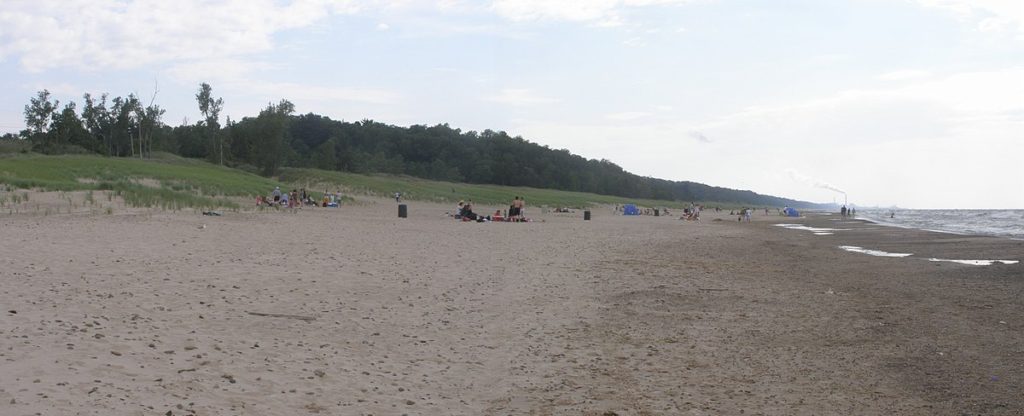
Kemil Beach has minimal attractions and little parking. These beaches are near Dunbar Beach and provide a more tranquil beach environment. Avoid the temptation to park on the streets in the surrounding areas because you’ll almost certainly receive a parking citation. Kemil Beach and the Dune Ridge Trail share a parking area. This beachfront drive is among the most beautiful. Along with more facilities, you may also locate the Lake View Picnic area here.
Dunbar Beach
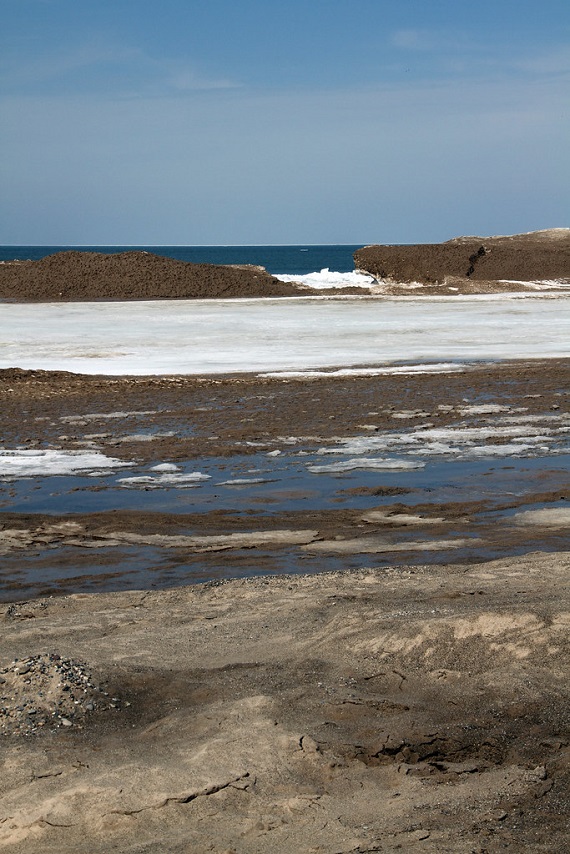
Dunbar Beach is a stunning beach. There is restricted parking at this popular location between the Lake View Picnic Area and the historic Century of Progress residences. Enjoy this lovely beach in a quiet community with no lifeguards. On windy days, the beach was clear and breezy. Nearby, there are well-known historic structures that are frequently visited by visitors. The beach is less popular, and only a small portion of the area is handicap accessible. The beach is not wheelchair accessible. Overall it is a fantastic beach for relaxing.
Lake View Beach & Picnic Area
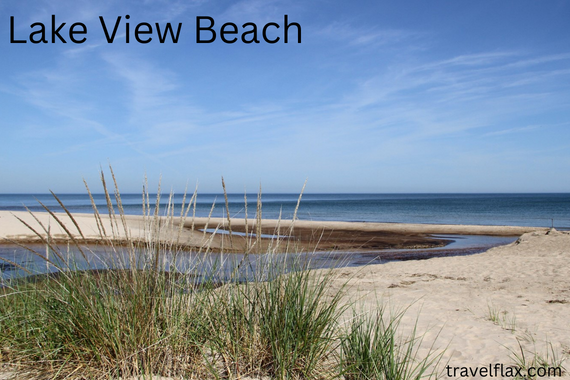
One of the few locations in the Indiana Dunes with picnic tables facing the shore is Lake View Beach, which offers a covered sitting area. Parking is close by, practical, but quite scarce. During warm weather, spots will fill up rapidly. There are picnic shelters overlooking the lake in only one other location in the national park.
Central Avenue Beach
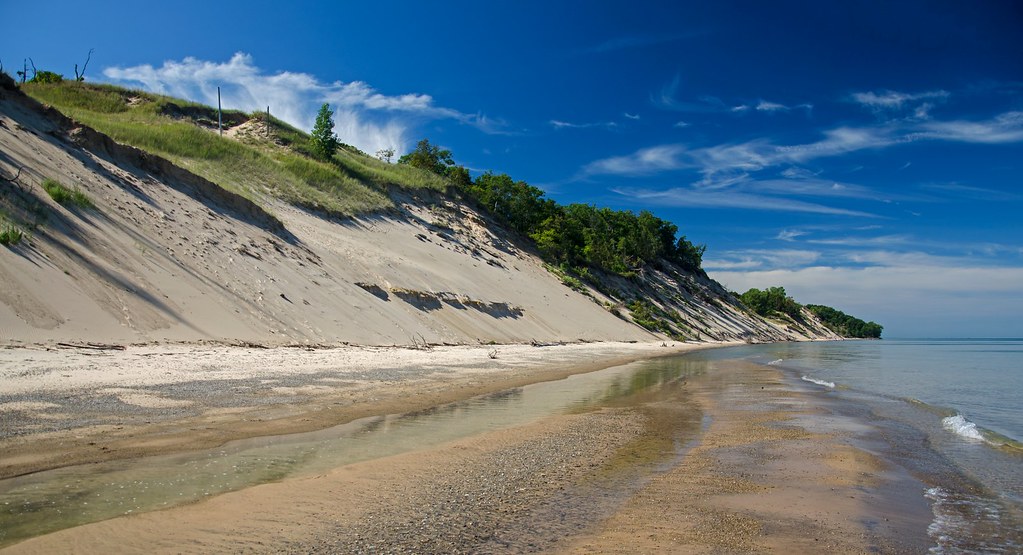
Central Avenue Beach is located in front of large dunes that conceal a hidden forest. It is strongly advised against climbing the eroding and potentially dangerous inclined dunes since they are fragile. There are a few better spots in the park for biking. Most of the park’s forests, flower fields, and marshes are located here.
Mount Baldy & Beach
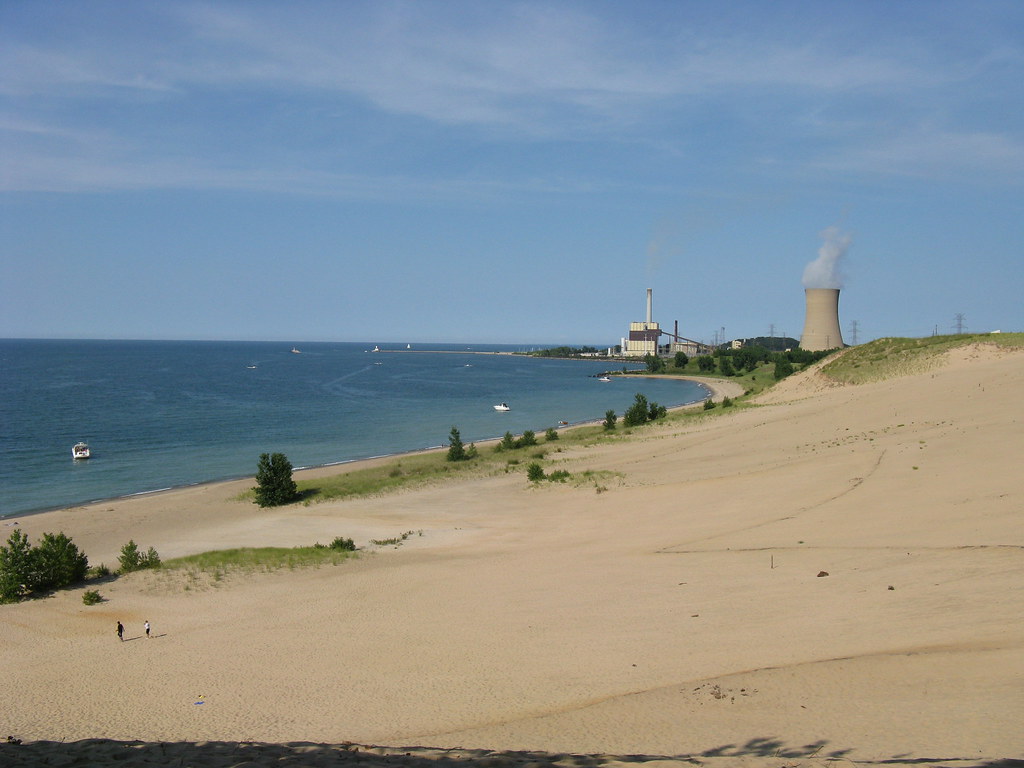
The largest living dune in the national park is called Mount Baldy. It is located on the east side of the park. Its peak is 126 feet above the water surface of Lake Michigan. At a rate of several feet per year, the dune is advancing farther inland.
The beach is accessible to everyone and just requires a brief trek from the parking lot to the shore; however, it is not permitted to climb the dune off-trail. Several times a year, National Park rangers do lead guided treks up the dune. The largest “living” dune in the park, this one shifts up to 4 feet annually. The hike can only be completed with rangers, but the beach is open all year.
Conclusion
Indiana Dunes is worth seeing, but there are a few limitations. Compared to other places, Indiana Dunes is a modest region. You can likely see the highlights in 1-2 days unless your plans include camping and daytime beach lounging. When you go, be aware that while the countryside is stunning, some views do include distant industrial regions. Indiana Dunes is a terrific vacation spot whether you want to travel quickly and enjoy some great hiking or a leisurely day at the beach.
